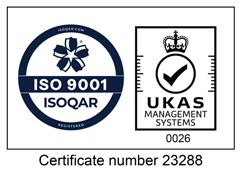Service providers in developing markets dominated by 3G networks may be thinking that leap frogging a generation to 5G appears to be the desirable option. Real Wireless CTO Simon Fletcher argues that LTE still merits very careful consideration.
I want to sing the praises of a fast, efficient, flexible technology that enables virtualisation, IoT service delivery, private networks and literally thousands of revenue-generating services.
Another paean to 5G or even 6G? No. Looking at the many challenges that lay ahead before 5G can really standalone and make a business case for itself, I want to suggest there’s a strong case for service providers in developing markets to look again at 4G LTE.
One of LTE’s core strengths is that, unlike 3G WCDMA networks, the underlying technology borrows heavily from the IT space and employs robust and well understood FDMA (frequency division multiple access) wide-area network technologies that have their roots in the WiMAX community.
From an architectural perspective, LTE is a native IP system that is extremely efficient in the context of data transport. Its use of OFDMA (orthogonal frequency division multiplexing access) as a bearer technology means that, assuming the availability of spectrum, service providers can aggregate carriers efficiently to increase bandwidth over time – delivering scalability of up to 80Mbps or more.
In short, LTE has proven to be cost effective and scalable, capable of dealing with high levels of data throughput. It is also highly resilient.
On the downside, while LTE is a brilliant data transport workhorse, bringing voice over LTE (VoLTE) to market proved to be extremely challenging, with significant issues associated with costs, scalability and integration with legacy and available user devices. Over the years, VoLTE has suffered from what was intended to be an interim circuit switched fallback (CS-FB) approach becoming difficult to displace. VoLTE requires upgrades to IP Multimedia Subsystem (IMS) which have proved more challenging and costly than originally envisaged. Still many markets have not fully dropped legacy approaches, but the good news is that the industry is committed to the move.
And this brings us to the central case for LTE for developing markets. In the early days of LTE, it was both expensive and risky for both operators and equipment vendors that were trying to make investment decisions based on hope rather than experience. Today, there’s a great deal of experience out there.
LTE is now an extremely mature technology and it’s one that has continued to innovate as the standard has evolved. A prime example of this is the ability of LTE to coexist with other OFDMA technologies in unlicensed bands like Wi-Fi.
To date, the coexistence potential of LTE in unlicensed bands may not have had huge take up, but it’s indicative of LTE’s growing alignment with other core technologies associated with the IT world. This is an area in which Real Wireless has done a good deal of work and it has been intriguing to observe how, as cellular technologies have moved closer to the IT and Cloud space, unlicensed technologies like Wi-Fi have shifted to meet them more than halfway.
For example, the 802.11ax Wi-Fi standard introduced OFDMA as a controlled access mechanism into the Wi-Fi standard. This means that, for example, common features of LTE – such as multi-user MIMO – are now also part of the latest Wi-Fi standard.
The other key area that is becoming increasingly important for LTE service providers is IoT. This is a world in which cellular initially appeared to lose out to LoRA and Sigfox, but where LTE, because of its ubiquity and reliability, is beginning to push ahead of the crowd.
The final significant benefit of a technology that has high levels of field-tested reliability and which continues to evolve is the large number of applications and services that have built up around it. Once again, like handsets, many of these took a long time to evolve, but today any service provider launching LTE services is spoilt for choice in terms of the range and depth of services it can provide from day one.
In addition, and importantly, many of the game-changing architectures generally associated with 5G can already be cost-effectively launched over LTE – including private networks, virtualised networks and, as we have seen, IoT networks.
Gambling on new technologies is for those with very deep pockets or fierce competition on their heels. 5G has huge potential but there are still big questions to be resolved at both a technical level and also in terms of use cases and business models. For many service providers, it surely makes sense to invest in a tried and tested solution with a great deal to offer both MNOs and their customers and which, after a few years, will also offer a proven migration path to 5G – as opposed to the multiple choices currently in the mix.
In fact, there’s probably never been a better time for service providers in developing markets to jump on to the LTE bandwagon and Real Wireless has a strong track record supporting service providers to develop technology investment strategies that not only support current commercial and service requirements, but which also provide a clear roadmap for future growth.

















